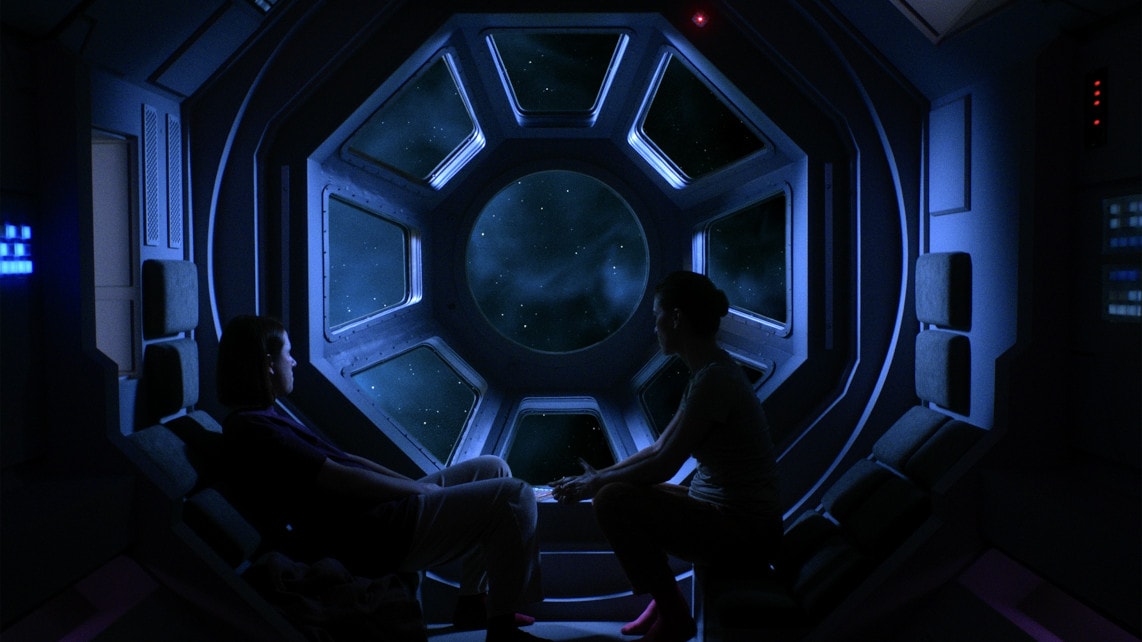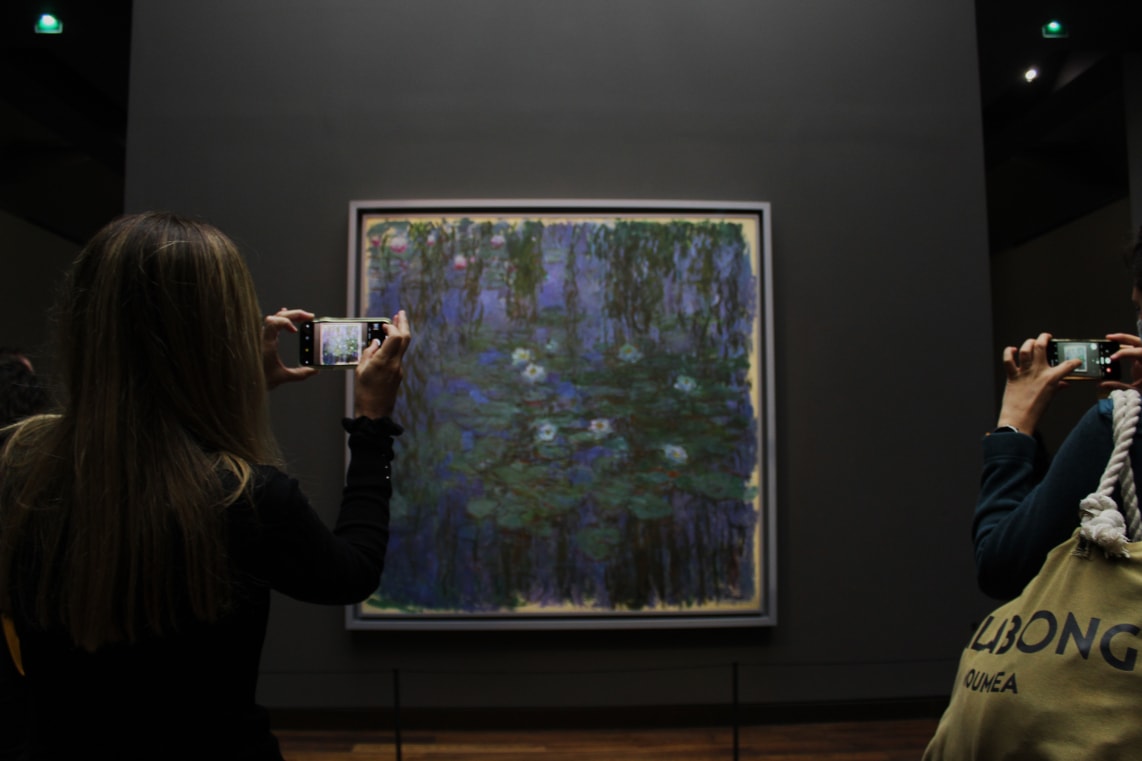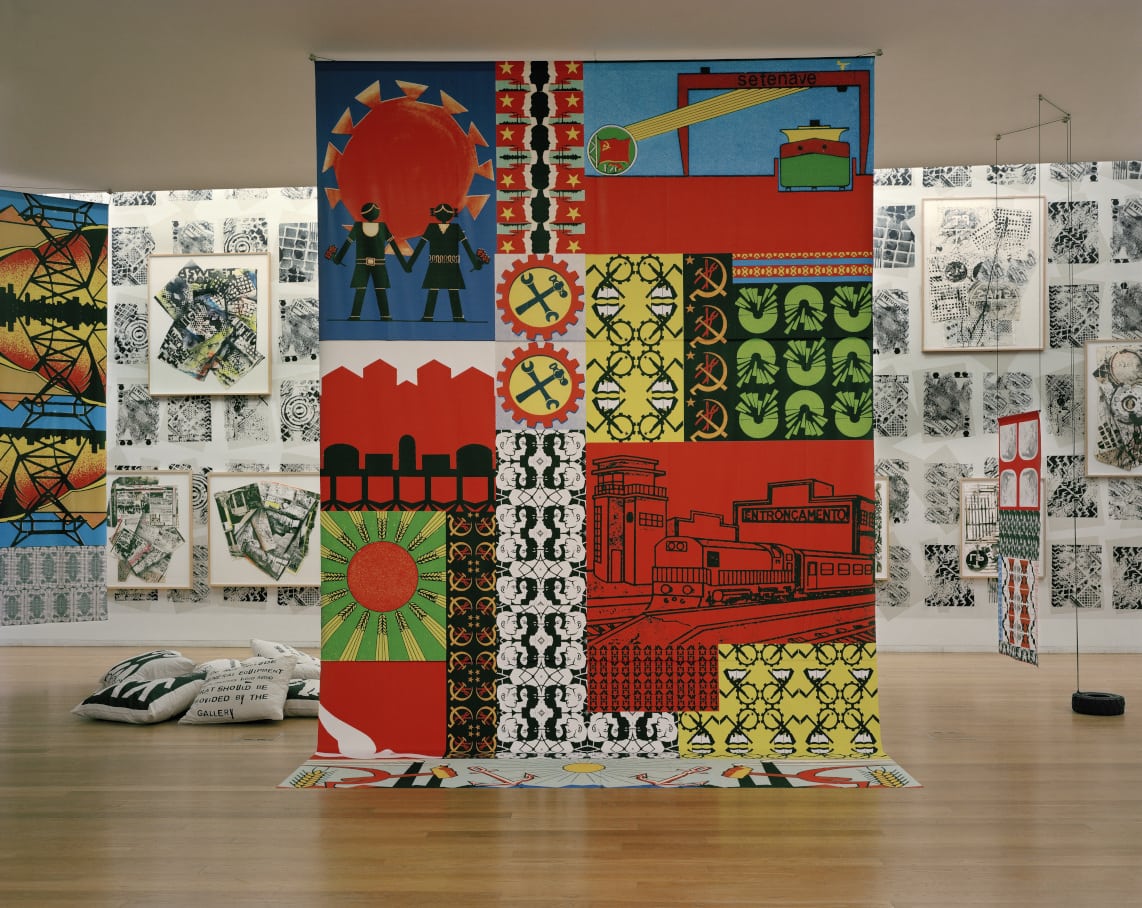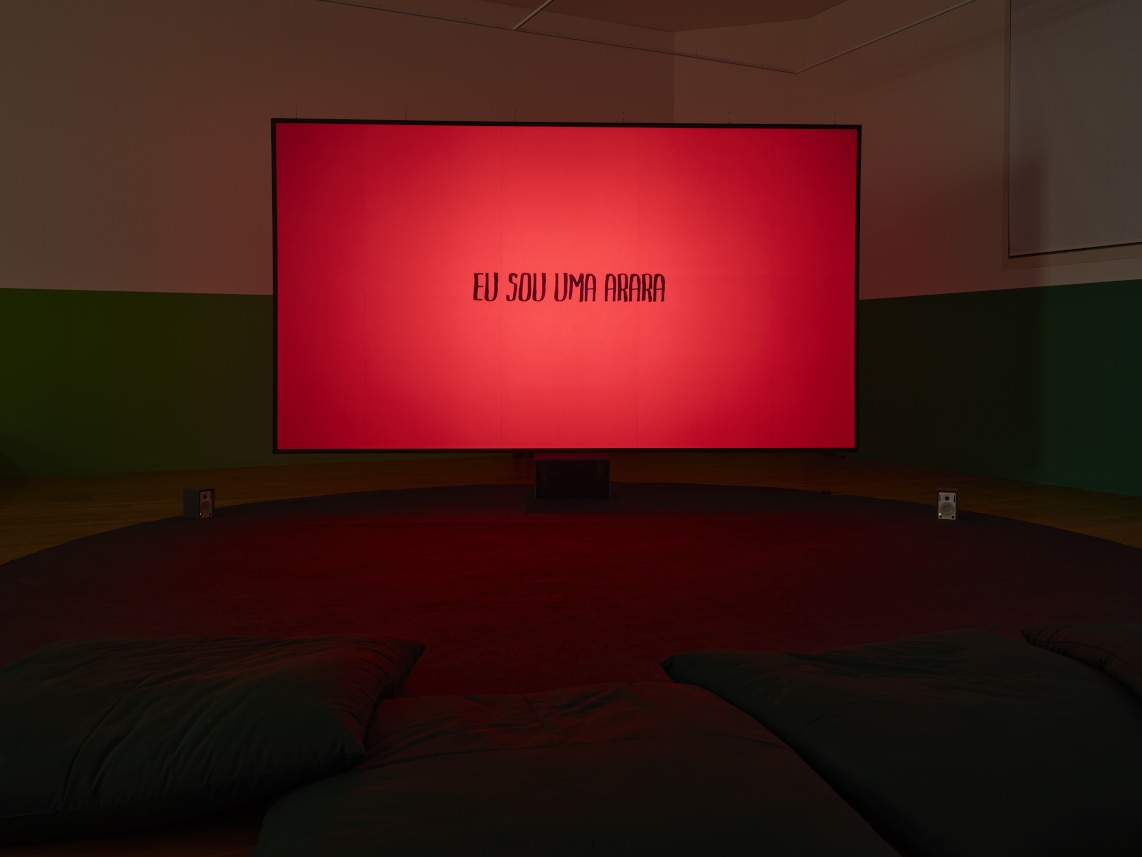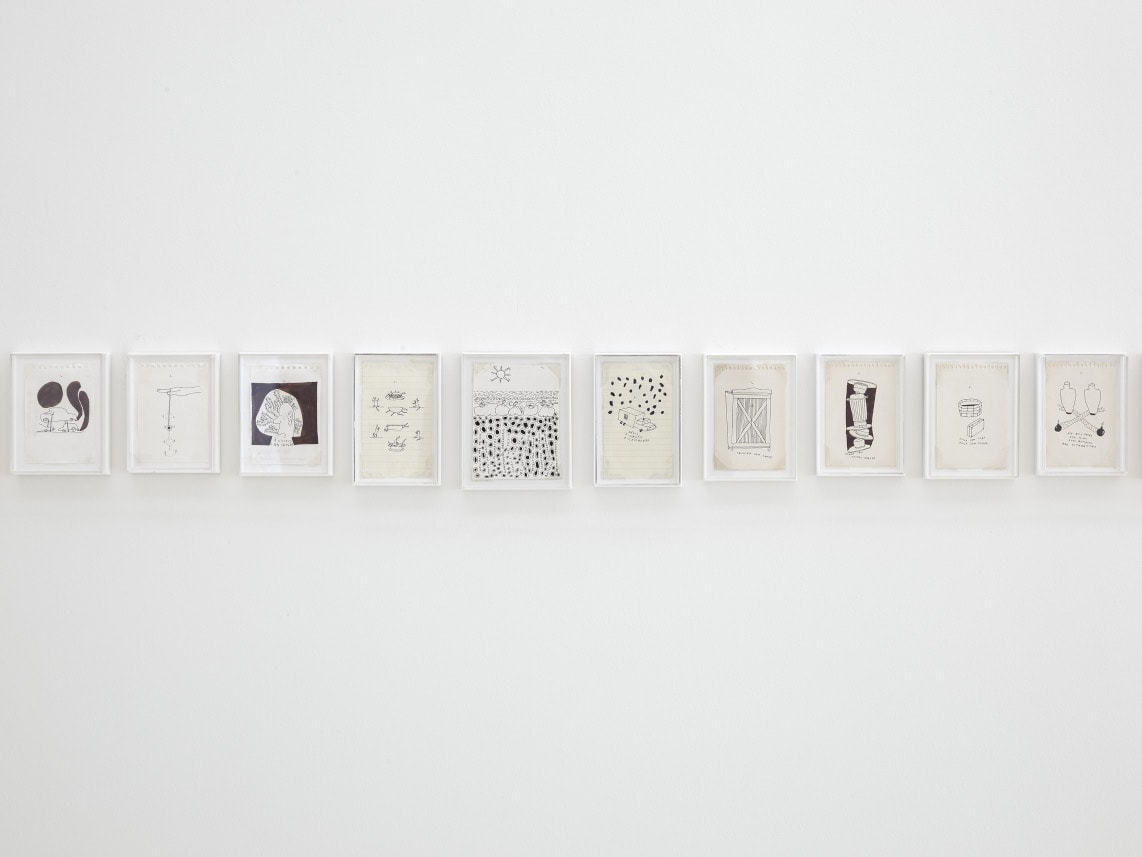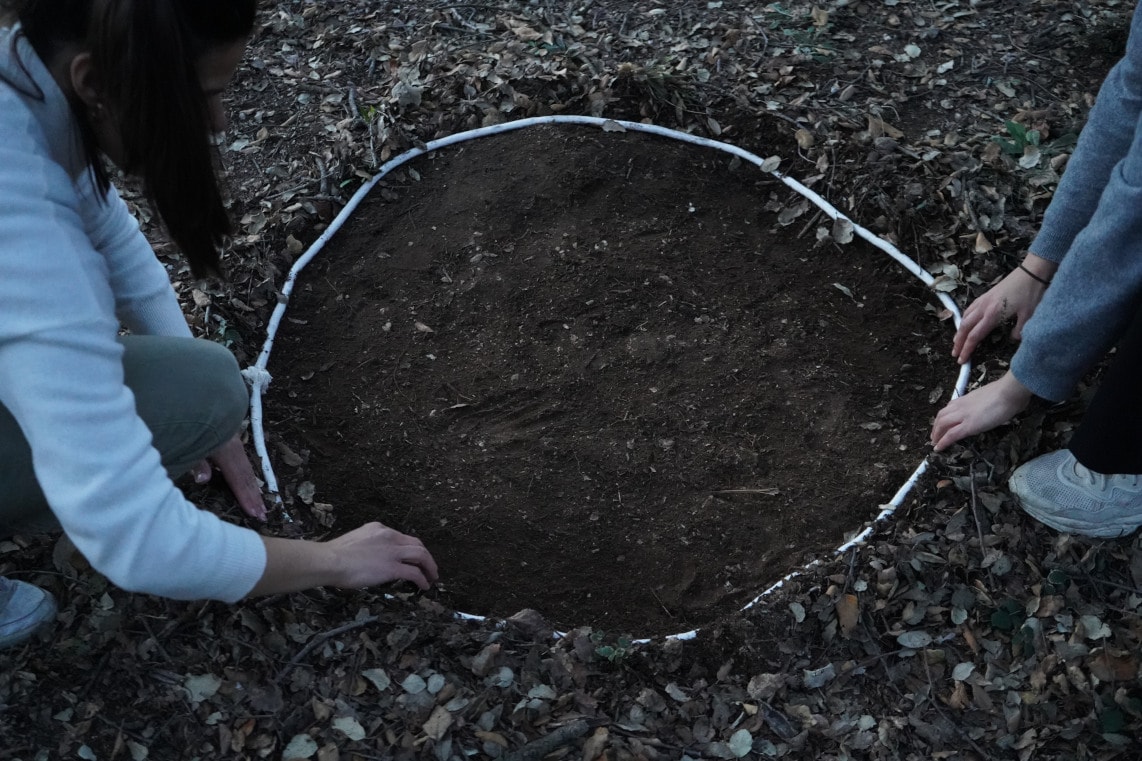A magician endlessly repeats: “No Hay Banda!” and, still, we hear a band. A trumpeter surprises the spectator just as he retreats, letting the melody echo quietly in the stage’s emptiness. “It’s all recorded!”, shouts the magician ironically, confronting the spectator with their naivety. Such is the beginning of the Club Silencio scene from Mulholland Drive (David Lynch, 2001), an acclaimed cinema mise-en-scène.
Using a still from this scene and resorting to the same illusionist effect as David Lynch, a string of drawings by Carlos Correia starts the exhibition at the Galeria Pedro Oliveira. Besides the possibility of reproducing the work of art, the spell of authenticity is broken, which Walter Benjamin dubbed “aura”, and the ease of reaching out to the receiver ensues. As well as a reference to the German philosopher, the title of the exhibition Loss of aura is a tribute to Correia, who in 2012 created a self-titled publishing house to present his work. Bibliografia, a book made of covers, is one of the artist’s publications in the exhibition. The compilation of literary and artistic references stands on a plinth, in a reflection on the editorial format as a work of art. With the same motto, Material Escavado by André Alves presents abstract compositions based on concealing (and revealing) book pages, covered with ink blocks. The aura crisis is evidenced in the manipulation of these texts, which results in new narrative meanings – “choose/ a crisis that can send/ us into a new world”.
Separated by a column, all those hours/ beating back/ memories/ spent by André Alves communicates with a photograph from the collection of the National Museum of Ancient Art (MNAA). The work is by Maria Trabulo and depicts the museum’s internal structure, in a fervent critique of the institution. Made by the same author, a set of six MNAA plinths create, given the absence of the work, the estrangement of the spectator. Covered in dust collected by the artist, the plinths in the institution’s sculpture collection are transformed from validation mechanisms commonly present in traditional museum setting to active tools for reflection on the museum’s current situation. In the same room, a capital from Palácio Almada-Carvalhais is portrayed in the photographic series Ballad of today by André Cepeda. We know that the object portrayed was commissioned by Rui Fernandes de Almada, the person who is thought to have commissioned the painting of Saint Jerome, the only copy by Albrecht Dürer in Portugal, which is part of the MNAA’s collection. On photographic representation, we know that the camera is a priori an archival machine, and that the archive is an active discursive system, used here to think of the monument as a mirror of history. This is an example of the growing interest in protected heritage, which helps to build the identity of the world we live in. The gallery’s last room features Pilar Mackenna building several maquettes, intuitive and abstract compositions based on objects collected by the artist. Using verbs such as to bend, fit, multiply, or suspend, the Chilean artist presents meditations on monument fragility. As if it were a time machine, a watercolour by Mackenna reminds us of Kandinsky’s work, making us reflect on the objective representation of reality that the expressionists opposed.
The tensions between document and monument are explored by Catarina Braga in the series If a tree falls in a forest and no one is around to hear it, does it make a sound?. The artist uses a digital file (Google Earth) to dissolve the boundaries between amateur and professional, public and private. Inverting the exhibition’s title, the image becomes “the sovereign analogue of identity, memory, and history, joining past and present, virtual and real, thus giving the photographic document the aura of an anthropological artifact and the authority of a social instrument“[1]. Moving into nature photography’s contradictions in the Anthropocene, the artist reflects on the biosphere where there is no untouched land. The Amazon images, captured in the 2019 summer, are contemporary with the devastating fires motivated by the interests of Jair Bolsonaro’s farming industry, part of an economic system that the health crisis has already proved it is possible to suspend.
Loss of Aura brings together works by André Alves, André Cepeda, Carlos Correia, Catarina Braga, Maria Trabulo and Pilar Mackenna. The exhibition is curated by Luís Pinto Nunes and Susana Lourenço Marques and is at Galeria Pedro Oliveira until May 7.
[1] Enwezor, Okwui. (2008). Archive Fever: Photography between History and the Monument. New York: International Center of Photography. P. 13.
